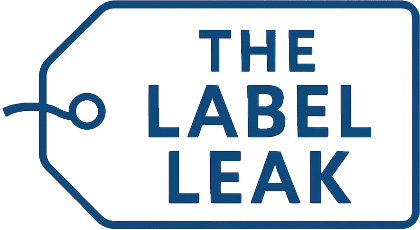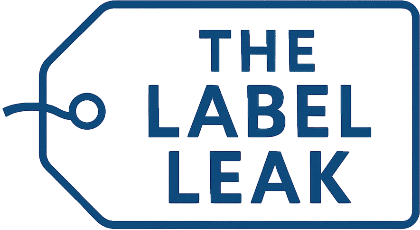PFAS Contamination in Iowa Water: What Communities Should Know
PFAS contamination in Iowa water shows a hard truth that many people did not want to face.
Chemicals meant to make life easier, resistant pans, firefighting foam, and waterproof jackets, have left a trail that now runs straight into drinking water.
Iowa utilities and local leaders now scramble to fix what took decades to unfold. Deep wells get drilled, expensive filters go in, and lawsuits start to pile up.
People deserve clear answers, not jargon or hidden data. Safe water should not be a question in Iowa or anywhere else.
Facing PFAS means facing mistakes head-on and pushing for strong action before more harm settles in.
Key Takeaways
How PFAS Entered Iowa’s Water Systems?
Firefighting foams like AFFF are a primary contributor to PFAS contamination in groundwater and municipal supplies
PFAS chemicals slipped into Iowa water slowly, almost invisibly. Used for decades in firefighting foam, nonstick coatings, waterproof clothing, and food packaging, these substances found their way into soil and rivers through spills, industrial runoff, and landfill leachate.
Once in the environment, PFAS do not break down, making them nearly impossible to remove without expensive treatment.
Iowa has many airports and military sites where firefighting foam played a major role in spreading PFAS. Industrial sites and chemical plants near the Mississippi River also contributed.
Over time, these chemicals traveled into shallow wells and surface water supplies, where many towns still draw water today.
Common Entry Points
Iowa farm equipment potentially contributing to PFAS contamination through agricultural runoff
- Firefighting foam at airports and training sites
- Industrial discharges and wastewater treatment plants
- Landfills leaking into groundwater
- Agricultural runoff mixing with local water supplies
Example Cases
Central City recorded the highest PFAS level in a shallow well, showing the impact of vulnerable groundwater sources.
Camanche faced contamination likely linked to a chemical plant across the river. The city decided to switch the distribution to an untainted well to avoid further contamination of the system.
Health Risks Linked to PFAS Exposure
Health concerns tied to PFAS are serious and well-documented. Even small amounts can build up in the body over years, increasing the chance of illness. Medical experts have linked PFAS to higher cancer rates, liver problems, immune system damage, and complications in pregnancy and child development.
Most Common Health Issues
- Cancer risks: Higher rates of kidney and testicular cancer
- Liver and thyroid effects: Changes in hormone balance and liver function
- Immune response: Reduced vaccine effectiveness and higher infection risk
- Pregnancy and child health: Low birth weight, delayed development
Who Faces Greater Risk?
- Infants and young children, due to rapid growth and small body size
- Pregnant women, because PFAS can cross the placenta
- People with long-term exposure through water or work
Personal Stories
In towns like West Des Moines and Dubuque, parents now ask if baby formula mixed with tap water is safe. Retired firefighters worry about years of foam exposure. Many people who once trusted their water feel forced to install home filters or switch to bottled water.
Facing these risks means understanding them fully and demanding clear, local information. A strong public health response depends on honest reporting and quick action.
Cities and Towns Most Affected Across Iowa
Several Iowa cities and towns face rising concerns over PFAS exposure, especially in communities relying on rivers for municipal water sources
Several Iowa towns found PFAS in their drinking water above new federal safety limits. Some detected low levels, but even those require attention under current health guidelines.
The spread shows no clear pattern tied only to city size or region. Instead, each case connects to local industry, shallow wells, or river influence.
Cities With Highest Levels
- Central City: 61 ppt, the highest in Iowa; the contaminated well shut down and replaced with a deeper source.
- Camanche: Around 12 ppt; linked to industrial activity near the Mississippi River. New deep wells now under construction.
- West Des Moines: Over 5 ppt; suspected connection to firefighting foam at a nearby base. One well closed, new monitoring plans underway.
- Dubuque: Around 4.2 ppt; shifted water use toward deeper aquifers, planning a major filtration upgrade.
Other Notable Locations
- Ames, Burlington, Muscatine, Sioux City, Davenport, and Keokuk each reported levels above or close to 4 ppt, the new EPA threshold.
- Smaller systems like Kammerer Mobile Home Park found levels around 29 ppt, highlighting that even tiny water systems face big challenges.
The River Factor
Many towns along the Mississippi River, including Burlington and Davenport, reported PFAS detections. The river acts as both a source and a carrier, spreading industrial runoff far beyond its origin.
Testing Results and New Federal Safety Standards
The EPA recently set a strict new safety limit of 4 ppt for PFOA and PFOS in drinking water. Iowa water systems must meet this standard by 2029 or 2031, depending on the system size and available resources.
Iowa Test Results Overview
- Out of 126 public water systems tested, over 40 percent showed PFAS detections in treated water.
- Central City’s 61 ppt remains the state’s highest recorded result.
- Many towns sit between 4 and 12 ppt, above the new legal standard but below old advisories.
New Legal Limits
The older standard allowed up to 70 ppt combined, which led many towns to consider their water safe. New research revealed health risks at much lower levels, forcing a major policy shift.
PFAS Standards
Standard
Limit
Time Frame
Actions by Iowa Utilities and Local Governments
Iowa utilities did not wait for disaster before taking action. Once PFAS appeared in test results, many water systems moved fast to protect residents. Some towns shut down contaminated wells, others drilled new deep wells, and several invested in advanced filtration systems. Each move aimed to bring PFAS levels below the new federal limit of 4 ppt.
Well Closures and Source Shifts
- Central City immediately closed its shallow well with 61 ppt and switched to a deeper well.
- West Des Moines shut down a high-level well and now uses alternate sources to dilute any remaining PFAS.
- Dubuque reduced reliance on shallow alluvial wells and pulled more water from deeper aquifers.
Investments in New Technology
Dubuque set aside about 15 million dollars for a new deep well and advanced carbon filtration units. Other cities, including Camanche and Burlington, plan similar upgrades.
Example Upgrades
- Granular activated carbon filters
- Reverse osmosis systems
- New monitoring equipment for faster detection
Communication and Transparency
Several water departments published detailed reports and held town hall meetings to explain PFAS findings. In Dubuque, water officials shared all data with residents, even before required by law. Open updates helped rebuild trust, especially in communities where faith in local water had already started to erode.
Lawsuits, Costs, and Who Pays the Price
Fixing PFAS contamination does not come cheap. New wells, filtration systems, and legal work can cost millions. Many Iowa cities joined nationwide lawsuits against manufacturers of PFAS products. The legal claim centers on the idea that chemical companies knew about health risks yet continued to market these products.
Iowa Cities Joining Lawsuits
- West Des Moines Water Works
- Des Moines Water Works
- Other smaller utilities considering legal steps
Settlement Money and Future Bills
Large chemical companies, including 3M and DuPont, reached multibillion-dollar settlements in 2023 and 2024. Some funds will flow to Iowa cities to help pay for treatment upgrades.
Funding Sources
- Lawsuit settlements
- Federal infrastructure grants
- State revolving loan programs
Impact on Residents
Even with legal help, costs may trickle down to customers. Rate increases on water bills are likely in towns needing major upgrades. Many families feel frustrated, as they did not cause the pollution yet face the burden to fix it. Questions about fairness continue, and community debates over long-term funding solutions are already underway.
Steps Iowa Residents Can Take at Home
A whole-house home filtration system like this one helps protect families from harmful chemicals, including PFAS compounds in tap water
Residents do not have to feel powerless. Even before citywide treatment upgrades finish, people can take practical steps to reduce PFAS exposure at home. Choosing the right approach depends on local water reports and each household’s budget.
Check Water Quality Reports
Start by reading the annual water report or checking the Iowa DNR’s online PFAS map. Knowing exact PFAS levels in your area helps decide the next steps. If your community shows any detection, consider additional precautions.
Home Filtration Options
Filter Type
Effectiveness for PFAS
Approximate Cost
Maintenance Needs
- Avoid using tap water for infant formula if PFAS levels are high.
- Do not assume bottled water is always safer, as some brands also contain PFAS.
- Stay updated on local utility upgrades and advisories.
Future Plans to Secure Safe Water in Iowa
Even clean-looking tap water in Iowa may be affected by PFAS contamination, prompting calls for better filtration and testing
Iowa faces a long path to fully remove PFAS from public water. New federal rules set a clear target: 4 ppt by 2029 or 2031. Many towns already work on upgrades, but each project brings financial and technical hurdles.
Planned Infrastructure Changes
- Deep well drilling to avoid shallow contaminated sources
- Installation of large-scale filtration systems (carbon or reverse osmosis)
- Ongoing quarterly testing to catch new spikes early
State and Federal Support
Federal grants and settlements provide some relief, but gaps remain. Iowa officials continue to negotiate additional aid and review stricter local rules for future contamination prevention.
Possible New Regulations
- Bans on certain PFAS-containing firefighting foams
- Limits on industrial discharges into rivers and groundwater
- Stronger monitoring requirements for private wells
FAQs
What products still contain PFAS today?
Many everyday items still use PFAS because of their water and stain resistance. Examples include some rain jackets, fast-food wrappers, microwave popcorn bags, ski wax, and certain types of carpeting. Checking product labels or choosing items marked “PFAS-free” can help limit extra exposure.
Can boiling water remove PFAS?
Boiling water does not remove PFAS. These chemicals do not break down with heat and may even concentrate if water evaporates. Only advanced filtration methods like reverse osmosis or specific activated carbon filters can reduce PFAS in tap water.
Are private wells in Iowa at risk for PFAS?
Yes, private wells can also be affected, especially near industrial areas, airports, or military sites. Unlike city water systems, private wells do not get regular government testing. Owners should consider periodic testing through certified labs if they suspect nearby sources.
Can PFAS enter food grown at home?
PFAS can enter vegetables and fruits if grown in contaminated soil or irrigated with polluted water. Using rain barrels or water from a safe source can reduce this risk. Washing produce thoroughly does not fully remove PFAS absorbed into plants.
Is bottled water a safer alternative?
Bottled water is not always tested or regulated for PFAS. Some brands may contain PFAS at similar or even higher levels than tap water. Always check if the brand provides test data or certifications proving PFAS-free claims before relying on it as a safe option.
Final Thoughts
PFAS contamination in Iowa water reveals a problem that grew quietly for decades and now demands bold action. Families across the state deserve to know exactly what enters their homes when they turn on the tap. Behind every test result stands a community deciding how to protect children, support local farmers, and secure long-term health.
Many towns have already started closing wells, upgrading treatment systems, and taking legal steps to cover soaring costs. Residents can support these efforts by staying informed, asking local leaders direct questions, and making practical changes at home when needed. Clean water remains a shared responsibility.
Facing PFAS honestly means more than meeting federal rules on paper. It means rebuilding trust and guaranteeing safe water for every Iowan, today and far into the future.


